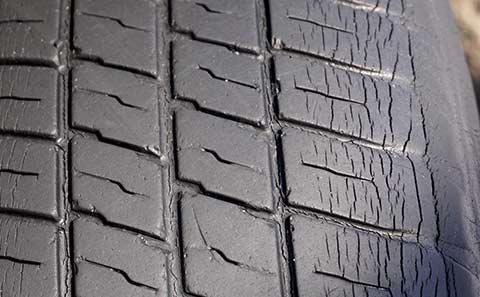Those who live in northern areas of the country are all too familiar with that dreaded first frost of the year, when the ice scrapers are removed from hibernation and car defrosters are fired up. But it’s not so much this first temperature drop that is dreaded as what comes next – months’ worth of snow and cold weather. Even the smallest bit of snowfall can make driving a nightmare – and as we observed from 2014’s polar vortex, such conditions can spread into areas of the country that are unaccustomed to this type of winter weather.
All that being said, knowing how to drive safely – yet efficiently – in winter weather conditions is crucial. Here’s a look at some tips for maintaining traction and getting from Point A to Point B safely in snowy, icy weather:
- Proper Tire Inflation: As temperatures drop, it’s likely that air pressure in the tires will too. In fact, it’s estimated that the air pressure in a tire has the potential to decrease by up to 2 pounds for every 10 degrees of temperature change. And being that improper inflation can accelerate tread wear and lead to a reduction in fuel economy – not to mention a potential blowout – it’s important to regularly check air pressure. Most auto experts recommend checking pressure at least once a month during the winter. This can be done at your local tire shop, a service that’s often complimentary to both check and refill tires if you’ve purchased tires from the venue in the past. You can also purchase a handheld air pressure monitor to do it yourself.
- Use Winter Tires: Winter tires, or “snow tires,” are another option for better traction and handling during snowy conditions. Such tires have softer rubber that’s more apt to grip snowy and icy roads. Models also come with special siping and winter treads, all of which are designed to offer superior gripping ability compared to general all-purpose tires. Snow tires should only be used during the winter months, however, as the softer treads can wear away quickly during warmer temperatures.
- Smart Driving: In normal driving conditions, it’s recommended that motorists stay at least 2 seconds behind the vehicle in front of them to provide adequate stopping space. This following space should at least be doubled in winter weather conditions to allow more time to come to a complete stop without risking an accident.
- Accelerate and Decelerate Slowly in the Snow. This helps to better regain and maintain traction during starts and stops.
- Learn to Steer Into Skids: Losing control of the car in a skid can create panic in a driver. But there’s a right way and a wrong way to handle your vehicle if you start to lose control of it. Most people attempt to brake and turn out of the skid – that’s the wrong way. The right way is to actually turn into the skid and keep your foot on the throttle. While this may go against natural tendencies, gently accelerating transfers the vehicle weight to the rear wheels, which thereby helps you to maneuver in the skid’s direction, gaining further control of the vehicle.
- Let Your ABS Work When Needed. Virtually every car modern car that rolls off of the assembly line is equipped with anti-lock brakes. This technology allows you to apply full pressure to the brake pedal without the tires completely locking up (lock up can lengthen your stopping distance and result in no control of the car as it is slowing down). The ABS is there to “pump the brakes” for you right at the maximum threshold of the brakes’ capabilities. This means that the most effective way for you to stop your car quickly in snowy conditions will be to just simply slam on the brakes and keep your foot down until the car stops.
Sometimes the smartest decision that you can make is to not drive at all – but that’s a judgment call that you’ll have to make based on the conditions present. Winter is unpredictable in the sense that you never really know just how bad it is going to be. The only thing you can do is be prepared for the worst. You prep your home for winter, why not your car too? All it takes is a set of good tires and the right driving strategy to conquer winter on the roads for good.


